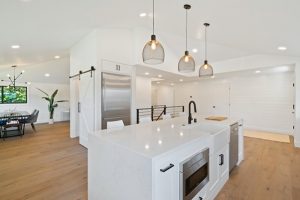You may have bought a run-down Melbourne building, and want to change it into a beautiful set of apartments. It may be an ancient ruin, or even a more modern one, and there is a lot of work to do. There are so many considerations: from electricians and commercial plumbers Melbourne regulations stipulate you must use, to the décor, permits, planning and so much more. You will have to look at each of these in turn in order to have your building turn out well and pass inspection.
So, let’s discuss some of the tips to help make that new construction a success.
Table of Contents
TogglePlanning
There is nothing more essential for a renovation than planning. You have to think through every aspect of your build, including what to do, what equipment and tools you will need, and the end result. Include staff and expert advice and don’t forget safety equipment and tools.
Plan your budget, and give yourself a realistic timeframe. You’ll need to consult experienced builders for the latter two but plan to get a little more funding since you’re likely to go over budget towards the end.
Permits
You will need permission to build and there are specific laws for specific areas, so find out before you start. You may, for instance, only be permitted to build during the day in residential areas. Also, you may need to reduce noise to accommodate neighbours, and do regular clean-ups to prevent too much dust and mess.
In addition, there are some considerations about the age of your building. It may be listed, which limits the changes you can make to it, and may constrain you to restoring it to look similar to what they were before. Find out, and get your permits and permissions so you don’t get fined later on.
You’re also going to have to post a notice about the build on the outside of the property, in order to get objections before you start. Locals or authorities may prevent you from renovating so be mentally prepared for anything at this stage.
Start with the Roof
If you have the go ahead, it’s probably best to start with the roof unless the foundations are faulty. Putting on the roof enables any other work you do to be protected. It does depend on whether you’ll need to take items out if the roof or not. But it gives the building shape and form from early on, and prevents waterlogging from rain, or extra heat from the sun hampering other processes.
Go to the Floor
One if the most essential items on the to-do list is the floor. It enables you to move around the building, carrying items without having to pick your way around holes or obstructions. You won’t put the finishing touches in until later, but as long as you have solid concrete or wood underneath to enable you to do the rest of your job well, it will suffice.
Important structures to ensure sturdiness in this regard are stairs. You will need to make sure no accidents happen here through faulty flooring.
Work on Plumbing and Lighting
Now work on the plumbing and electrics which are often situated in walls and ceilings. You may have had to demolish some walls in order to do this, but it enables you to work without hindrance. You can always build the shell of the walls after this step.
Always remember to add in scope for backflow testing in the early stages of building.
Focus on the Walls
The next item is to put in the walls or break down a few if you are amalgamating rooms. You have the opportunity to construct with different materials, and to customise layouts at this stage.
Now Add the Ceilings
Now you are ready to add the ceilings. Pop them in, and you are ready to put in the finishing touches.
Think of Plastering and Painting
Finally, you have the opportunity to plaster and paint. You can do different patterns with plaster. And you can bring in different hues and shades of colour in various rooms of the house. Just make sure the shades match the era of construction that you’re hoping to represent, or it will look out of place.
And of course you can now add the finishing touches to the floor, such as tiles or veneers to wooden or bamboo floors.
Add the Décor
Lastly, you have the opportunity to allow your artistic flair to come through. Some tips that often work for older buildings:
- Add some pretty lightshades.
- Find unusual cupboard doors and handles.
- Coordinate kitchen cabinets with your theme.
- Allow sinks, baths and toilets to express your individuality.
- Taps, too, can reflect the era of the house that you would like to express.
At this stage, you can add the appliances that are normally found in houses such as washing machines, fridges and stoves.
Conclusion
Reconstructing a house is both challenging and fun, but with proper planning and an awareness of what is involved, you will succeed in creating an amazing renovation. Do you have a specific question? Please share below.







